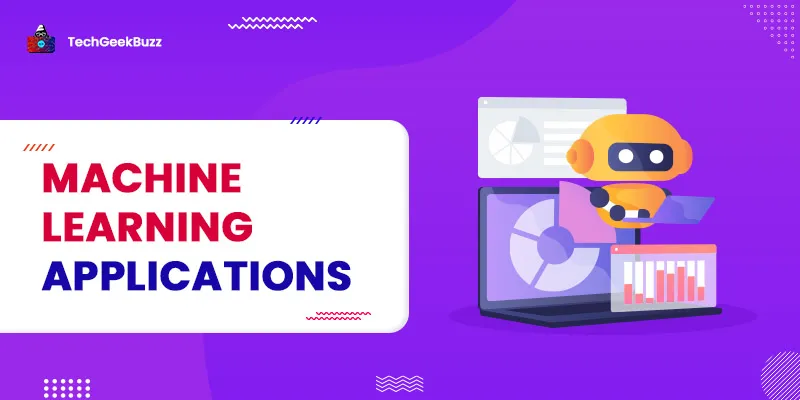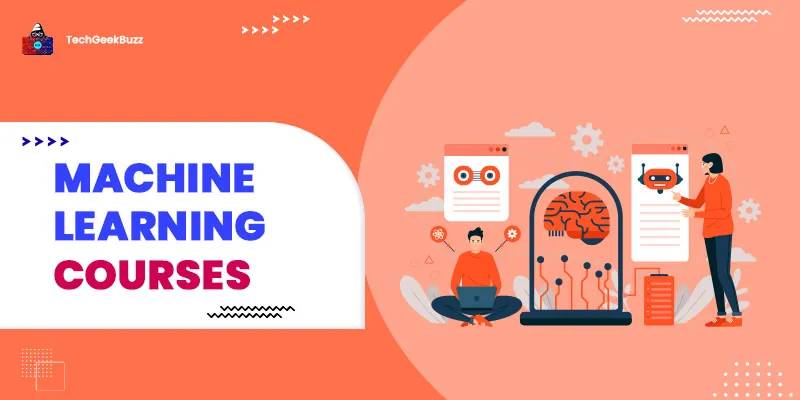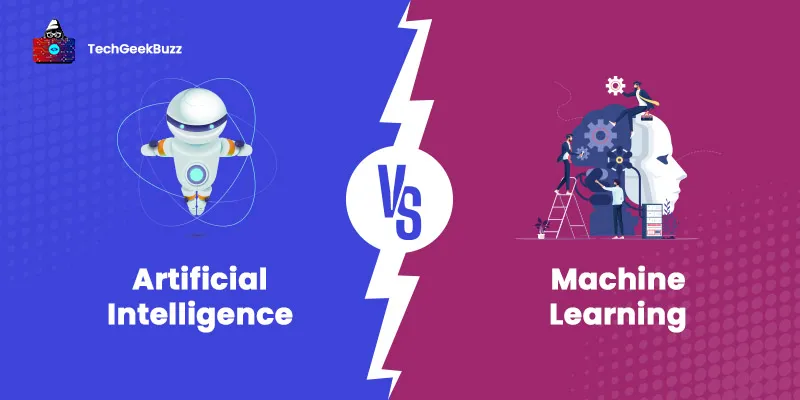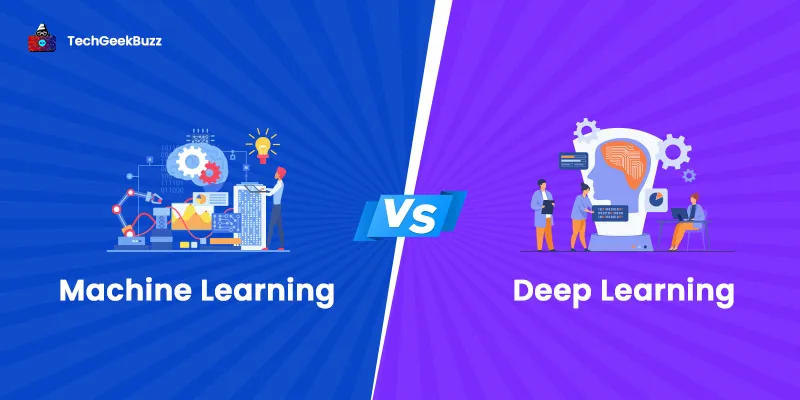- How Machine Learning Evolved
- What’s the latest in Machine Learning
- Top Application: How Machine Learning Is Tackling Covid19
- Machine Learning Applications
- 1. Traffic predictions
- 2. Social Media Services
- 3. Voice assistants
- 4. Email spam and malware filtering
- 5. Video surveillance
- 6. Search engine Optimization
- 7. Recommender systems
- 8. Online customer support/chatbots
- 9. Fraud detection
- 10. Image recognition/face detection
- 11. Language translators
- 12. Stock market trading
- 13. Medical diagnosis
- 14. Dynamic pricing
- 15. GPS-enabled cab services
- Conclusion
Machine learning is a branch of AI where machines can learn and perform tasks that only humans could do before. For example, machine learning algorithms can recognize faces and images, make decisions, find correlations between data to reduce the features of massive datasets, interact with humans and understand their language, and so on.
There are three types of machine learning:
- Supervised Machine Learning
- Unsupervised Machine Learning
- Reinforced Machine Learning
Learn more about what is machine learning ?
How Machine Learning Evolved
Machine learning first gained popularity because of its ability to perform pattern recognition and iterative learning. With the increased dependency on digital transactions and online purchasing, machine learning has been able to cater to the needs of such transactions and provide enhanced security and a better user experience.
With more and more data coming in for processing, businesses can understand user preferences better and promote their marketing content accordingly. Machines can do mundane tasks with high accuracy, and they can learn with experience. For example, Google photos face recognition – selects a face from various angles and asks the user if the person is the same or different. Based on this knowledge, Google can improve its search results the next time when you search for a particular person’s photo.
Consider the current COVID-19 as another example. Because of digital access, people can purchase essentials online, book tickets, do bank transactions, watch Netflix, and do so many things online in the comfort of their homes. We don’t even realize how dependent we are on machine learning for our day-to-day chores.
What’s the latest in Machine Learning
Machine learning is rapidly seeing a lot of growth, and here are some of the many latest advancements in the field:
- Transforming facial images into video sequences
- Gamify memory – analyze the impact of present decisions on the future
- Fully capable and dexterous robot hand that could solve the Rubik’s cube
- Generative pre-training to understand what the user wants to type based on the context
Top Application: How Machine Learning Is Tackling Covid19
Machine learning is being used to address several aspects of COVID-19. From understanding how the pandemic spread so fast to speed up research and treatment, machine learning has left no stones unturned to provide tools that enable telemedicine, support remote communication, provide food security, and much more.
- Contactless screening of patients for COVID-19 symptoms using chatbots (automatic chat response), thus reducing the burden on the medical staff.
- Drones are supplying food packets in containment zones and capturing footage to ensure everyone is following social distancing norms.
- Inside the hospital, robots can provide medicines and other help to patients to reduce human-to-human contact.
- Help analyze data quickly so that research and treatment work can be faster.
Machine Learning Applications
Other than helping with the current pandemic situation, Machine learning has been used widely in many domains:
1. Traffic predictions
Well, even though most humans are now working from home, the traffic jams are still there occasionally. Traffic predictions are made using deep learning techniques with inputs from various sources like databases, social media platforms, etc.
This helps commuters plan their travel accordingly – the traffic updates inform about road congestion, road conditions, work in progress, alternate routes, and also predict the estimated time to reach your destination from a particular route. LSTM is the most popular algorithm used for traffic prediction.
2. Social Media Services
Social media platforms like Instagram, Facebook, Twitter, etc., depending on user engagements to promote their business strategies and share promotional material. These platforms have built-in analytical tools that can measure a user’s engagements on previous posts through likes, comments, and shares for targeted marketing.
Similarly, through sentiment analysis, machine learning uses natural language processing techniques to identify reactions of a user to a particular product or service, helping businesses improvise on their product/service.
Image/face recognition techniques are widely used by social media platforms like Facebook for tagging and recognizing similar faces and products. Through ML techniques, computers are also able to detect the brand logo or photos of products without any explicit text about the products.
Chatbots are the newest applications of AI and machine learning that can mimic human conversation. About 70% of users have had a positive and satisfying experience while resolving their queries through a chatbot.
3. Voice assistants
Voice assistants like Alexa, Siri, and Cortana are widely used and can answer user queries in a human-like form. These AI-based systems use natural language processing techniques to convert the human voice into an interpretable form that can be understood by the responder, which sits somewhere in the cloud.
The responder then finds the solution/answer to the question posed by the user, converts it into audio form, sends it to the device, and the device (Alexa, Cortana, Siri) then plays it to the user. These voice assistants can learn through previous conversations with users and improve themselves through self-learning. Voice assistants are based on speech recognition systems.
Vector Quantizations, Artificial Neural networks, and Dynamic time warping are the most common classification algorithms for voice recognition.
4. Email spam and malware filtering
Spam filtering is the most common application of machine learning, where emails are categorized based on some predefined criteria. Spam filtering algorithms can detect spam content (keywords) in emails and separate them from other relevant emails.
Email providers analyze text analytics that determines the presence of certain blacklisted words, content, header, permissions, or rules and filter messages accordingly.
The most common and efficient algorithm for spam filtering is the Naïve Bayes algorithm which uses the Bayes theorem of probability to determine the probability of an email being spam or not. Some other algorithms used for spam filtering are SVM, k-NN, Decision trees, and stacking.
5. Video surveillance
Intelligent video surveillance systems use deep learning techniques like object detection with localization and segmentation for identifying thefts, violence, explosions, and other suspicious activities. These videos are most helpful in big unstructured data. These techniques include object recognition, action recognition, violence detection, crowd analysis, and determining the count of people involved in a particular scene.
All this can only be done through machine learning as the machine is exposed to huge volumes of footage to determine unusual activities and make sense of it. Deep learning methods are much more advanced than traditional computer vision techniques for video analytics. R-CNN is the most popular algorithm which has a test time of 0.2 seconds per image.
6. Search engine Optimization
The best example of SEO is how Google uses machine learning to improve its search results. Because of machine learning, SEO is now not just keyword-driven but concept-driven. For example, even if you type the word ‘scheduled’ wrongly as ‘seduled’ or ‘scedooled’, google offers results for ‘scheduled’, and double confirms if the word you were looking for was in fact scheduled or not!
Search engines like Google can understand the concept of your pages through the metadata, title, headings, URLs, and other tags through machine learning algorithms. These algorithms can also find out the quality and helpfulness of the pages and increase the importance of backlinking. This means websites should consistently produce good content to be ranked higher. Google’s RankBrain is the most popular algorithm used for SEO.
7. Recommender systems
Online purchases, movies, and series are all examples of recommendation systems. These systems suggest products/services to the user based on their past purchases and preferences, as well as preferences and purchases of similar kinds of users.
For example, if you buy a laptop, Amazon next thing Amazon suggests is to get a laptop bag – because many people buy a laptop and a laptop bag together! In the same way, if you watch a comedy movie A on Netflix and give it a 5-star rating, it will suggest you watch similar movies watched by other users who also gave a 5-star rating to the movie A.
In simple words, a recommender system predicts a user's preferences for a particular item. Recommender systems can be of many types – collaborative, demographic, utility-based, knowledge-based, content-based, and Hybrid. Recommender systems personalize the content for each user and give them a unique online experience.
The most common techniques used to build recommender systems are collaborative filtering, content-based filtering, and hybrid filtering techniques. Collaborative filtering technique includes clustering, association, Bayesian techniques, and neural networks.
8. Online customer support/chatbots
Chatbots are used to mimic human chat conversations online through text or text-to-speech mechanisms. A chatbot can identify the user’s intent based on the input received and then extract the relevant data to help provide a correct answer to the query.
A chatbot can enhance customer experience by streamlining interactions and giving faster responses to human queries. This also reduces the burden on human customer care executives and saves time by solving common easy, and repeat problems.
More advanced versions of chatbots are similar to virtual voice assistants like Alexa and Siri. Apart from answering questions and providing customer support, chatbots are also used for booking tickets, tracking shipping, checking product inventory, recommending products or services, handling promotions and customer orders, finding businesses and restaurants nearby, building email lists, etc.
The multinomial Naïve Bayes, which is classic text classification, natural language understanding (NLU), and natural language processing algorithm, is most popularly used for chatbots.
9. Fraud detection
With machine learning and AI algorithms, identity verification, risk-scoring, behavioral analytics, live monitoring, and automation are more comfortable to perform. ML algorithms can learn from past fraud patterns and detect them in any future transactions. These algorithms are better and sharper in detecting newer fraud types than the human brain.
There are different types of online fraud, like email phishing, credit card and payment fraud, identity theft, document forgery, form jacking, fake account detection, etc. Both supervised (logistic regression, decision tree, random forest) and unsupervised learning algorithms like clustering can be used for fraud detection.
Neural networks are also used to identify hidden patterns and learn from previous experiences. Machine learning techniques can increase the speed of data evaluation and fraud detection and is an efficient way of detecting hidden patterns as they can reduce the false positives in the system.
10. Image recognition/face detection
Image recognition is a process in which a computer can identify an image correctly. It is a part of computer vision and is rapidly growing in domains like e-commerce, healthcare, gaming, and automotive.
The most common example of image recognition is Facebook face detection, where Facebook can identify different faces using a few tagged pictures. It is based on classification algorithms where the computer performs pattern matching using the available data. The input image is first simplified to extract essential features.
For example, if there is a full picture of a person in a background filled with trees, the machine will first focus on extracting only facial features from the image using Scale-Invariant Feature Transform (SIFT), Histogram of Oriented Gradients (HOG), etc.
The next step is to apply any classification algorithm like SVM, Random forests, k-NN, logistic regression, Artificial Neural Network, etc., to assign a label – or classify the image into a category.
Some typical examples of image recognition are picture-based search, real-time games like Microsoft Kinect, self-driving cars, and many more.
11. Language translators
We all have used Google Translate at some point. It can translate any word or sentence into a different language within a jiffy. What’s more, you can choose from many languages from all over the world. This is done through a technology called machine translation.
However, through deep learning techniques like sequence-to-sequence learning, the translation algorithm became much more powerful and accurate. The difference was that word-to-word translation used to ignore the grammar and sequence of words during translation. With this new approach, words are grouped and swapped in in order of words so that the translated sentence is meaningful and not just a collection of a few random words.
Well, this approach requires the addition of lots of rules from time to time. Adding new rules became complex because the same language had many regional variations and breaking of rules! The machines of today can translate using powerful statistical and probability methods.
Although using statistics for machine translation needs a lot of training data, it is an accurate way of translation because it produces not just one but many translations of the same text and then chooses the best answer. A sentence is broken into groups (chunks), and each chunk is translated separately.
Out of the many translations that are generated, the most frequently used are chosen over the less frequently used. Based on this, many translated sentences are generated, and the one that sounds most human is chosen as the final translation.
Neural networks like RNN and CNN are also used for translation, and scientists are looking into many other possibilities like translating images into text through extensive training!
12. Stock market trading
Machine learning has been making a lot of progress in finance, specifically the stock market. Computers are accurate, cheap, and more reliable than human analysts when it comes to handling enormous datasets for stock trading and analysis.
Machines can interpret vast amounts of different types of data – sometimes unpredictable – to identify patterns and make decisions. Some standard machine learning algorithms used for stock market analysis are logistic regression, SVM, CART (decision trees), regression trees, k-NNc, and XG Boost.
The entire process involves data collection, preparation, applying machine learning or deep learning algorithms, and performance evaluation. Deep learning techniques are also being extensively used for stock market analysis, wherein a huge amount of unbiased data is fed into the algorithm for training, which then builds a predictive model.
Methods like CNN are used for analyzing trading charts and identifying patterns; the Q learning method can be used to analyze the best times for trading, LSTM is used for determining the optimal portfolio combination, and so on.
As the stock market is dynamic and unpredictable, it is easier to analyze the market using machine learning algorithms rather than having human experts. Machines can be easily tweaked to change the parameters and analyze vast amounts of data any number of times, based on changes in the market. Also, performance can be measured automatically.
13. Medical diagnosis
Healthcare is one domain where the real applications of machine learning lie. The medical field has seen tremendous advancements in maintaining patient records, medical diagnosis, predicting diseases, and so on using advanced analytics techniques.
Machines can be trained to analyze images, for example, a CT scan, identify abnormalities, and focus on areas that need further discussion. Same way, predictive models can predict if a person has a particular disease by collecting their past medical history and other health parameters.
Doctors can easily access the medical records of any patient at any point in time to understand their medical condition and advise them on further care in a more accurate and better manner.
In recent developments, robots have been able to supply medicines to patients from time to time to minimize human contact. Machine learning is also being used extensively for research on drug discovery, trials, and manufacturing, clinical research, personalizes treatments, recognizing human gestures to identify unusual behavior (behavioral modification) and medical image analysis.
14. Dynamic pricing
Dynamic pricing means automatic changing of prices based on various conditions like demands, competitor prices, and logistics based. Suppose you want to travel from A to B. You check the bus fare, and it is a particular amount X. Next day you check the price, and it has increased to an amount Y. No, it is not done by a human; it is the work of a machine, which analyses the market conditions and updates the prices on websites accordingly.
Dynamic pricing is based on three methods – cost-based, where cost is increased or decreased based on business costs to keep profit levels at the specified level; competitor-based, where the machine analyses the price set by competitors and accordingly sets the price; demand-based, where prices are increased or decreased based on demand.
This is a win-win situation because end users can get the best deal out of service, and businesses are also able to get the maximum profit.
Dynamic pricing is done by mining the data and making machine learning to improve performance. Machine learning-based dynamic pricing is used extensively for flight bookings, cab services like Uber and Ola, hotels, and retail websites to maximize revenues. Dynamic pricing algorithms calculate the price based on the following equation:
p* = argmaxpp x d(p)
where p is the original price, and d(p) is the demand function.
The demand function is calculated based on all the previous price points and the observed demands for each of the points. The price should maximize the revenue but should be within the limits of the optimal price for the product or service. Once the price is set, its performance is observed for some time before applying the algorithm again.
15. GPS-enabled cab services
Most of us use cabs regularly for travel. Cab services like Uber and Ola have redefined the way taxis work and have provided the flexibility of dynamic booking. Cab service providers are using machine learning for service optimization and improving customer services by providing multiple benefits.
The very basic ideology of cabs like Uber is based on machine learning. For example, when you search for a cab, the Uber app can identify the nearest cabs available for your location using real-time data.
The system is also able to identify critical areas where there is more demand and ensures that there are enough cabs in those areas always. This also decreases the Expected Time of Arrival (ETA), which means customers do not have to wait for long before getting a cab.
Through machine learning algorithms, the app can know if there are any problems in the route and dynamically changes the route – for example, road congestion, roadblocks, weather conditions, etc. The ride can be tracked at each point, which ensures safety. Also, the carpooling option uses machine learning to identify users in the same areas who have booked a cab and ropes them in together so that a single cab can be shared during peak times.
Conclusion
We have discussed several important applications of machine learning in this article; however, this is not a comprehensive list. We are all using machine learning every day in some or the other way. For example, getting traffic updates, using language translators, cab services, recommender systems (Amazon, Netflix, etc.), and voice assistants have become a regular part of our life.
Once you understand the applications of machine learning, you will be able to appreciate its power in a better manner. If you want any other important applications to be included in this list, let us know!
People are also reading:
- Best Machine Learning Interview Questions
- Best Machine Learning Frameworks
- How to become a Machine Learning Engineer?
- Machine Learning Projects
- Classification in Machine Learning
- AI vs. ML vs. Deep Learning
- Machine Learning Algorithm
- Data Science vs. Machine Learning
- Decision Tree in Machine Learning
- Machine Learning Books





Leave a Comment on this Post